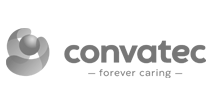
The science behind understanding your audience
Speaking of science, famous physicist Albert Einstein is often quoted as saying something like:
If you can’t explain it to a child, you haven’t understood it fully yourself.
– which lets us off the hook, as none of our clients are children.
But we certainly know enough to demystify much of the process of understanding your audience online.
Heuristic analysis for websites
The fundamental first part of improving any website is research based.
Beginning with a heuristic analysis – meaning people finding things out for themselves – experienced UX professionals examine the site.
This involves exploration and developing theories on which areas may be putting off users.
Then, two clear plans can be formulated – firstly, ensuring the site is up to best practice standards.
There’s plenty of available evidence that shows conclusively what does and doesn’t work on a site in terms of UX.
For example, in ecommerce, there are proven processes for creating a product page or checkout process to yield the best results.
But as well as getting a site up to industry standard, the more exciting reason for a heuristic analysis is to generate ideas for testing.
Quantitative research
By interpreting your website’s data it’s possible to see at which points in the funnel users give up or go elsewhere.
Which means that UX experts can design tests to try and prove why that happens.
And of course, once conclusions are reached, the next step is to implement improvements based on evidence, not hunches.
Qualitative research
But quantitative data can only tell part of the story – numerical facts like website conversions and bounce rates.
That doesn’t tell you about user motivations – the reasons for the actions they take on your pages – the why, not just the what.
You gain that deeper understanding via qualitative research – observing and communicating with the people behind the data.
Examples of qualitative research methods include:
- Using screen recorders (a visual record of how users interact with a site)
- Remote user testing (hearing what they think in real time as they navigate a site)
- Completing surveys (to understand intent and motivations – and to gain insights on pain points, obstacles and other frustrations)
And probably one of the most often overlooked – simply talking to users in person.
User journeys depend on so many factors – different value propositions with various features that will appeal to some and not others.
So the most straightforward way to learn why someone clicked a button, made a purchase or bailed out is by asking them.
Use test learnings to inform research
But if understanding your audience depends on that recognised research, why isn’t everybody doing it?
Because like Einstein knew about the atom bomb – knowledge should be used for the right reason.
And all those amazing insights you’ve uncovered need to be put to work in the right way.
So if a test has been correctly implemented – whether it involved aesthetic changes, copy or actual development work – you can learn from it.
Learnings are everywhere when it comes to CRO – but knowing how to incorporate previous ones into research going forward is an essential skill.
Insights are a tool that must be held by the handle, not the blade – otherwise you could suffer some of these common pitfalls:
- Focusing too closely on user intent and losing sight of overarching business goals
- Failing to recognise an inaccuracy at any stage of a test can impact final statistics
- Underestimating the importance of professional design and development
- Not testing enough to conclusively examine the robustness of a hypothesis
Listening to your audience and making the changes to make their lives easier isn’t rocket science.
But it does take patience, practice and professional expertise to properly see results.
How can CRO help your audience?
Conversion rate optimisation isn’t new – but in the last few years businesses of all sizes have begun to understand the benefits of it.
And the return-on-investment with CRO is clearly defined – because any changes made are entirely evidence based.
Get in touch today, or if you know someone who might be interested, share this content and spread the love.
Photo by Andrew George on Unsplash
-
 27.07.2021|UX research uses data and anecdotal evidence to improve page design for users. Boost your conversions, remove obstacles and streamline sales journeys.
27.07.2021|UX research uses data and anecdotal evidence to improve page design for users. Boost your conversions, remove obstacles and streamline sales journeys. -
 15.07.2021|What is CRO and why does your business need it? Reduce your CPA and create pages that convert with specialist support.
15.07.2021|What is CRO and why does your business need it? Reduce your CPA and create pages that convert with specialist support. -
 06.10.2021|Learn how to make the right changes to your website to improve your conversions and sales.
06.10.2021|Learn how to make the right changes to your website to improve your conversions and sales.
Scrapbook
We have a lot to talk about.Door4 opinions and insight - exploring performance marketing, communications and optimisation.













